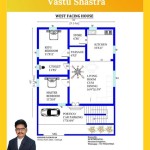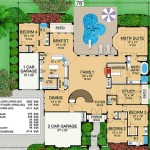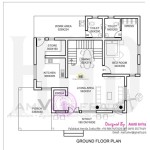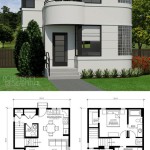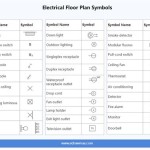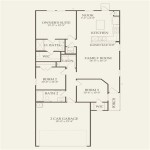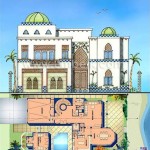Passive House Floor Plans: Designing for Energy Efficiency
Passive House, also known as Passivhaus, is a rigorous, voluntary standard for energy efficiency in a building, resulting in ultra-low energy requirements for heating and cooling. Achieving this standard requires careful planning and execution, beginning with the floor plan. A well-designed Passive House floor plan is the foundation for a comfortable, healthy, and environmentally friendly home.
Passive House floor plans prioritize optimizing solar gain, minimizing heat loss, and ensuring proper ventilation. These principles guide the placement of rooms, windows, and insulation to create a highly efficient building envelope. The design process often involves energy modeling software to predict and fine-tune performance before construction begins.
Orientation is a crucial factor in Passive House design. Ideally, the longest side of the house should face south (in the northern hemisphere) to maximize solar heat gain during the winter months. This allows the low winter sun to penetrate deep into the living spaces, providing passive heating. In the summer, the higher sun angle and strategically placed overhangs prevent overheating.
The layout of rooms within a Passive House floor plan is also carefully considered. Living spaces and bedrooms are typically situated on the south side to benefit from solar gain, while utility areas, bathrooms, and storage spaces are placed on the north side to act as a thermal buffer. This zoning strategy helps maintain a comfortable temperature throughout the house with minimal energy input.
Window placement is another critical element. South-facing windows maximize solar gain, while strategically placed east- and west-facing windows can capture morning and evening sun, respectively. North-facing windows are minimized to reduce heat loss. The size and type of glazing also play a significant role in performance, with high-performance, triple-pane windows being the standard for Passive House construction.
Insulation is a cornerstone of Passive House design. A continuous, airtight layer of insulation envelops the entire building, minimizing thermal bridging and preventing drafts. This typically involves thicker insulation than conventional construction, often exceeding R-40 in walls and R-60 in roofs. The airtightness of the building envelope is rigorously tested using a blower door test to ensure minimal air leakage.
Ventilation is essential for maintaining healthy indoor air quality in a highly insulated and airtight Passive House. A mechanical ventilation system with heat recovery (MVHR) continuously supplies fresh, filtered air while exhausting stale air. The MVHR system preheats the incoming fresh air using the heat from the outgoing stale air, minimizing energy loss and maintaining a comfortable temperature.
Compact building forms are generally preferred in Passive House design. A smaller surface area relative to the building volume reduces heat loss. This can be achieved through simple rectangular shapes or more complex designs that minimize external walls and maximize internal volume.
Thermal mass can also play a role in regulating indoor temperatures. Materials with high thermal mass, such as concrete or brick, can absorb and store heat during the day and release it slowly at night, helping to moderate temperature fluctuations.
Designing a Passive House floor plan often requires a collaborative approach between architects, engineers, and energy consultants. Energy modeling software is used to simulate the building's performance under various conditions, allowing for optimization of the design before construction begins. This ensures that the finished building meets the stringent Passive House performance criteria.
While Passive House floor plans adhere to specific principles, they can be adapted to a variety of architectural styles and personal preferences. From contemporary to traditional, single-family homes to multi-unit buildings, the Passive House standard can be applied to diverse projects. The key is to integrate the core principles of energy efficiency into the design from the outset.
Accessing pre-designed Passive House floor plans can be a valuable resource for those interested in building to this standard. These plans offer a starting point and can be customized to meet specific needs and site conditions. Working with experienced Passive House professionals is crucial to ensure that the final design adheres to the required criteria and performs as intended.
The cost of building a Passive House is often a concern. While initial construction costs may be slightly higher than conventional construction, the long-term energy savings and improved comfort quickly offset this difference. Furthermore, various incentives and rebates are often available for building to the Passive House standard, reducing the overall cost.
The benefits of a well-designed Passive House floor plan extend beyond energy efficiency. These homes provide superior indoor air quality, increased comfort, and reduced noise levels. They are also more resilient to extreme weather events and contribute to a smaller carbon footprint.
Ultimately, Passive House floor plans represent a paradigm shift in building design, prioritizing energy efficiency, comfort, and sustainability. By carefully considering orientation, insulation, ventilation, and other key factors, these plans create a blueprint for a healthier and more environmentally responsible built environment.

2 Bedroom Modern House Passive Home Plan With Garage And Screen Porch

Heatspring Free Floor Plan 10 Ways Passive House Design Is Diffe Than Normal Home

Plans Passive Design Solutions Custom Home Builds Renovations

Passive Solar Home In Stoneville Western Coveney Browne Architects

Deltec Homes Renew Collection Ridgeline B 1604sf Passive Solar Layout Vaulted Ceilings High Clerest House Plans Floor Modern

Great Floor Plan For Solar Passive Home In Google Search House Plans Narrow
What Does A Passive House Cost To Build Leanhaus

Modern Passive House Solar Design 3 Bed Stylish Home Plan

The Akuna Series Standard Block Passive House Designs

An Introduction To The Flatrock Passive House Greenbuildingadvisor

